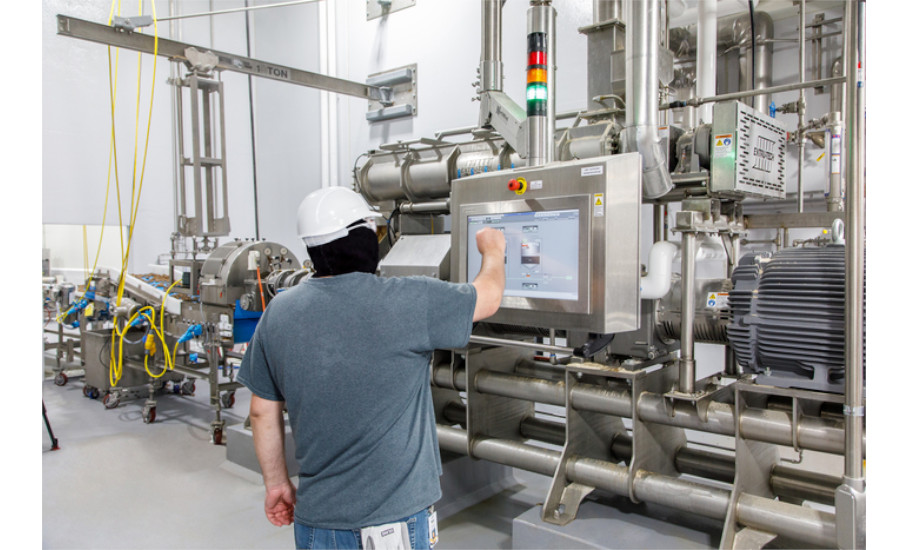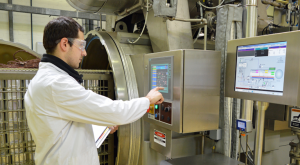Introduction: In the intricate web of our culinary world, an unsung hero silently orchestrates the production, preservation, and packaging of the sustenance we enjoy daily—Food Engineering. This captivating discipline merges the principles of engineering with the intricacies of food science, transforming raw ingredients into culinary masterpieces. Join us on a journey through the realm of Food Engineering, where innovation and precision converge to redefine the way we produce, process, and experience our food.
I. Engineering Precision in Food Production: Crafting Culinary Excellence
At the heart of Food Engineering lies the precision applied to food production processes, ensuring that every step contributes to the creation of safe, high-quality, and flavorful products.
Optimizing Production Processes: Food Engineering optimizes production processes, employing engineering principles to streamline manufacturing operations. From automated food assembly lines to computer-controlled cooking processes, precision is the hallmark of efficient production.
Quality Control and Assurance: Engineered systems play a crucial role in quality control and assurance, utilizing sensors and monitoring devices to ensure that food products meet rigorous standards. This precision guarantees consistency, flavor integrity, and adherence to safety regulations.
Innovations in Food Processing: Food Engineering introduces innovations in food processing that go beyond traditional methods. High-pressure processing, ultrasonic technology, and advanced heat transfer mechanisms exemplify how engineering advancements enhance the efficiency and quality of food production.
II. Precision in Preservation: Extending Shelf Life with Technological Ingenuity
Food Engineering extends its precision to the realm of preservation, employing innovative techniques to prolong the shelf life of perishable goods without compromising nutritional content.
Revolutionizing Preservation Methods: Engineering principles revolutionize preservation methods, from modified atmosphere packaging to novel refrigeration technologies. These advancements not only maintain freshness but also minimize the need for artificial preservatives.
Cold Chain Management: Precision in temperature control, a fundamental engineering concept, is applied to cold chain management. This ensures that food products, from farm to fork, maintain optimal conditions, preserving their quality and safety throughout the supply chain.
Sustainable Packaging Solutions: In response to environmental concerns, Food Engineering introduces sustainable packaging solutions. Biodegradable materials, smart packaging, and eco-friendly alternatives are engineered to reduce waste and environmental impact.
III. Cutting-Edge Technologies in Food Engineering: Pioneering the Future of Culinary Innovation
The future of food is shaped by cutting-edge technologies within the realm of Food Engineering. These advancements not only enhance efficiency but also open new frontiers for culinary exploration.
Automation and Robotics: Automated systems and robotics play a pivotal role in food processing and manufacturing. From precision slicing to intricate assembly tasks, automation ensures efficiency, consistency, and safety in food production.
Smart Manufacturing: Food Engineering embraces the era of smart manufacturing, incorporating data analytics, artificial intelligence, and the Internet of Things (IoT) to optimize processes, reduce waste, and enhance overall productivity.
Nanotechnology in Food: The application of nanotechnology introduces novel possibilities in food engineering, from enhancing the nutritional content of products to improving food texture and taste. Nanoencapsulation, for instance, allows for controlled release of flavors and nutrients.
IV. Bridging Tradition and Progress: Engineering in Harmony with Culinary Wisdom
In the rich tapestry of Food Engineering, there is a delicate dance between tradition and progress. This section explores how engineering principles not only preserve culinary heritage but also drive innovations that address global challenges.
Preserving Culinary Techniques: Food Engineering acts as a custodian of traditional culinary techniques, utilizing engineering precision to preserve the authenticity of time-honored recipes. Modern equipment, designed with precision, ensures that traditional flavors are faithfully retained.
Addressing Global Challenges: In response to global challenges, Food Engineering plays a crucial role in developing sustainable solutions. Engineering precision is applied to create processes that reduce energy consumption, minimize waste, and support environmentally friendly practices.
Collaborative Endeavors: Academia and Industry Unite for Culinary Progress Successful collaborations between academia and the food industry exemplify the impactful outcomes born from the synergy of knowledge and practical application.
Academic Research Driving Innovation: Cutting-edge research in academic institutions provides the foundation for innovative solutions in Food Engineering. From novel processing methods to sustainable packaging, collaboration with academia ensures a continuous stream of groundbreaking ideas.
Industry Implementation of Technological Advances: The private sector actively implements technological advances developed through collaborative endeavors. From large-scale manufacturing plants to local food enterprises, industry players leverage engineering innovations to enhance efficiency and product quality.
Conclusion:
Navigating the Future of Food Engineering
In this journey through the engineering marvels of food, we’ve unveiled the intricate precision and innovative strides that define Food Engineering. From optimizing production processes to extending the shelf life of products, and from cutting-edge technologies to preserving culinary traditions, Food Engineering stands as a cornerstone in the evolution of our culinary landscape.
Recap of Engineering Precision in Culinary Excellence: Food Engineering, through engineering precision, optimizes production processes, ensures quality control, and introduces innovations in food processing. This precision guarantees the crafting of high-quality and flavorful products.
Precision in Preservation and Technological Ingenuity: Extending its precision to preservation, Food Engineering employs innovative techniques like modified atmosphere packaging and sustainable solutions, ensuring the longevity of products without compromising nutritional content.
Cutting-Edge Technologies Pioneering Culinary Innovation: Cutting-edge technologies within Food Engineering, such as automation, smart manufacturing, and nanotechnology, open new frontiers for culinary exploration. These advancements enhance efficiency and drive innovation in the future of food.
Bridging Tradition and Progress: Engineering in Harmony with Culinary Wisdom: Food Engineering delicately bridges tradition and progress by preserving culinary techniques, addressing global challenges through sustainable solutions, and fostering collaborative endeavors between academia and industry.
Encouragement for Readers to Embrace Food Engineering Marvels: Now, as we stand at the intersection of engineering precision and culinary creativity, I encourage each reader to embrace the marvels of Food Engineering in their daily lives. Whether you’re a food enthusiast, industry professional, or aspiring engineer, there is beauty in understanding the engineering behind the food on your plate. By delving into the intricacies of Food Engineering, you not only enhance your culinary experiences but also contribute to the continuous evolution of our global food systems.
In every process, in every bite, there is an engineering story waiting to be uncovered—a story that Food Engineering tells with innovation, precision, and purpose. So, let us embark on this ongoing exploration, savoring not just the taste of our food but the engineering ingenuity behind each culinary masterpiece.



